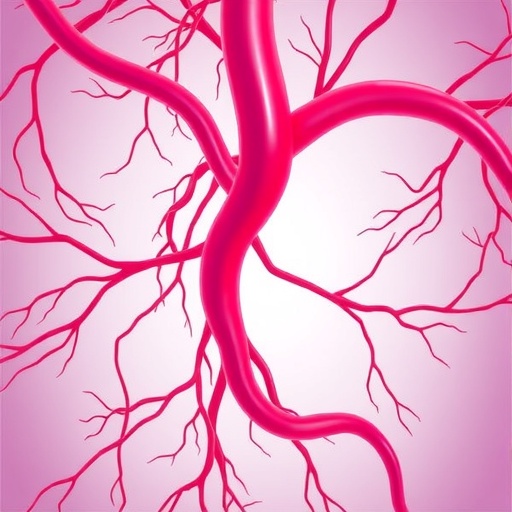Central vein stenosis (CVS) is emerging as a significant concern in the realm of healthcare, especially for patients undergoing hemodialysis. Recent research has illuminated the prevalence, clinical characteristics, and outcomes associated with this condition, shedding light on its critical implications for dialysis access. This understanding is pivotal as it not only informs clinical practices but also enhances the decision-making process for healthcare providers dealing with renal failure patients.
The anatomy of central veins plays a crucial role in understanding CVS’s influence on dialysis access. The internal jugular vein and the subclavian vein are vital structures that facilitate the return of blood from the upper body to the heart. When stenosis occurs in these areas, it can lead to a cascade of complications, including increased intracranial pressure, venous hypertension, and long-term effects on dialysis circuits. This anatomical perspective highlights the need for vigilant monitoring and timely intervention.
Diagnosis of central vein stenosis typically involves a combination of imaging techniques. Doppler ultrasound remains one of the first-line tools employed by clinicians due to its non-invasive nature and ability to provide real-time feedback on blood flow. Additionally, conventional angiography and newer modalities like CT venography or MR venography can offer deeper insights into the extent of stenosis and associated vascular anomalies. Each diagnostic approach has its advantages, and combining these methods can enhance accuracy and reliability.
The prevalence of central vein stenosis has been noted to vary across different populations, influenced by factors such as comorbidities, age, and the type of vascular access used. Studies suggest that individuals with prolonged dialysis support are at a higher risk of developing CVS, especially those who rely on central venous catheters as their primary form of access. Understanding these demographics is essential for tailoring prevention strategies and optimizing patient outcomes.
Clinical characteristics associated with central vein stenosis are diverse and can significantly impact patients’ quality of life. Symptoms can range from mild to severe, including swelling of the arms, neck pain, and even chest discomfort in prolonged cases. Additionally, complications may arise that necessitate shifts in treatment strategies, such as switching from one form of vascular access to another. Awareness of these symptoms is paramount for patients and health professionals alike, paving the way for prompt diagnosis and intervention.
Outcomes for patients with central vein stenosis are notably influenced by the timing and efficacy of treatment interventions. Early detection often leads to more favorable results, enabling healthcare professionals to implement strategies such as angioplasty or stenting to alleviate stenosis. Conversely, late interventions can complicate matters further, leading to inadequate dialysis or the need for more invasive procedures. Therefore, an emphasis on early clinical assessment cannot be understated in managing CVS effectively.
The study of CVS also brings to light its implications for healthcare costs and resource allocation. As the prevalence of CVS is projected to rise with increasing diabetes and hypertension rates, the economic burden associated with its treatment will also escalate. Understanding these dynamics is vital for healthcare systems as they plan for future resource needs and strive to maintain cost-effectiveness in patient care.
From a systemic perspective, the impact of central vein stenosis extends beyond individual patients, influencing healthcare practices and policies related to renal care management. The findings from ongoing research underscore the importance of comprehensive strategies that integrate screening, diagnosis, and management of CVS into broader renal care frameworks. This holistic approach not only improves outcomes for dialysis patients but also enhances the efficiency of healthcare delivery.
Further research is critically needed to explore the multifactorial aspects of central vein stenosis, including genetic predispositions and the role of lifestyle factors. Investigating these areas could uncover new intervention points and lead to innovative treatment strategies aimed at reducing the incidence and impact of CVS. Emphasizing this research can help propel forward-thinking initiatives within nephrology and vascular medicine.
Healthcare professionals need to remain informed about the latest findings regarding central vein stenosis to provide optimal care. The integration of research findings into clinical practices is essential. This involves continuous education and training for nephrologists and vascular surgeons to foster a unified approach to diagnosing and treating this condition effectively.
In conclusion, the challenge posed by central vein stenosis cannot be underestimated, especially among individuals dependent on dialysis. The insights garnered from recent studies by experts in the field lay the groundwork for improved clinical management, better patient outcomes, and more effective healthcare policies. Awareness, vigilance, and early intervention stand as cornerstones in the fight against the complications arising from this condition.
It is crucial for future studies to continue exploring the intersection between central vein stenosis and advancements in dialysis technologies. Emerging innovations in vascular access techniques, coupled with rigorous research, could pave the way for enhanced treatment protocols. As research continues to evolve, it is imperative that both healthcare providers and patients remain informed and engaged in the management of central vein stenosis.
Subject of Research: Central vein stenosis in patients undergoing dialysis.
Article Title: Central vein stenosis- prevalence, clinical characteristics, outcome and its impact on dialysis access.
Article References:
Singh, K.S.S., Reddy, Y.D., Kumar, M. et al. Central vein stenosis- prevalence, clinical characteristics, outcome and its impact on dialysis access. J Artif Organs 28, 402–407 (2025). https://doi.org/10.1007/s10047-025-01495-x
Image Credits: AI Generated
DOI: https://doi.org/10.1007/s10047-025-01495-x
Keywords: Central vein stenosis, dialysis access, prevalence, clinical characteristics, outcomes.




